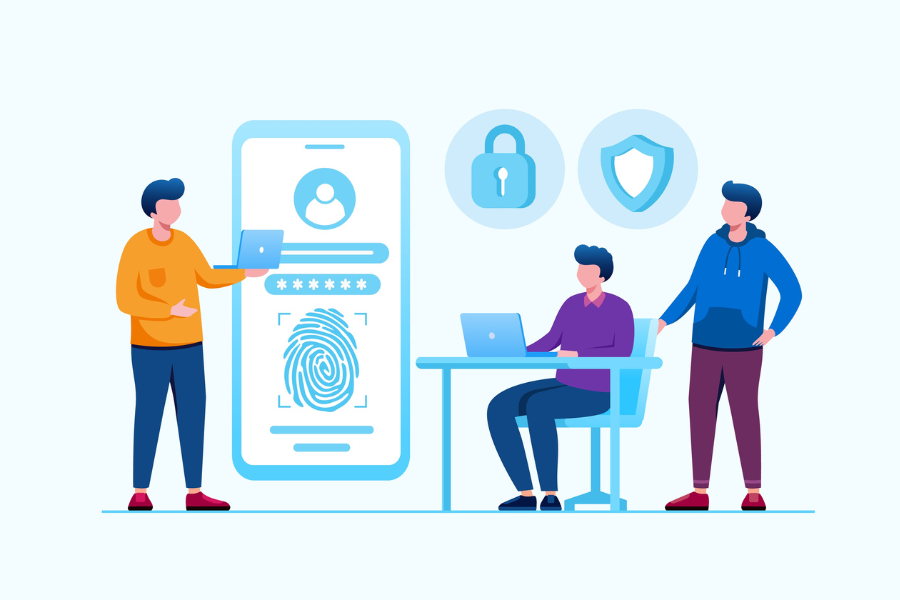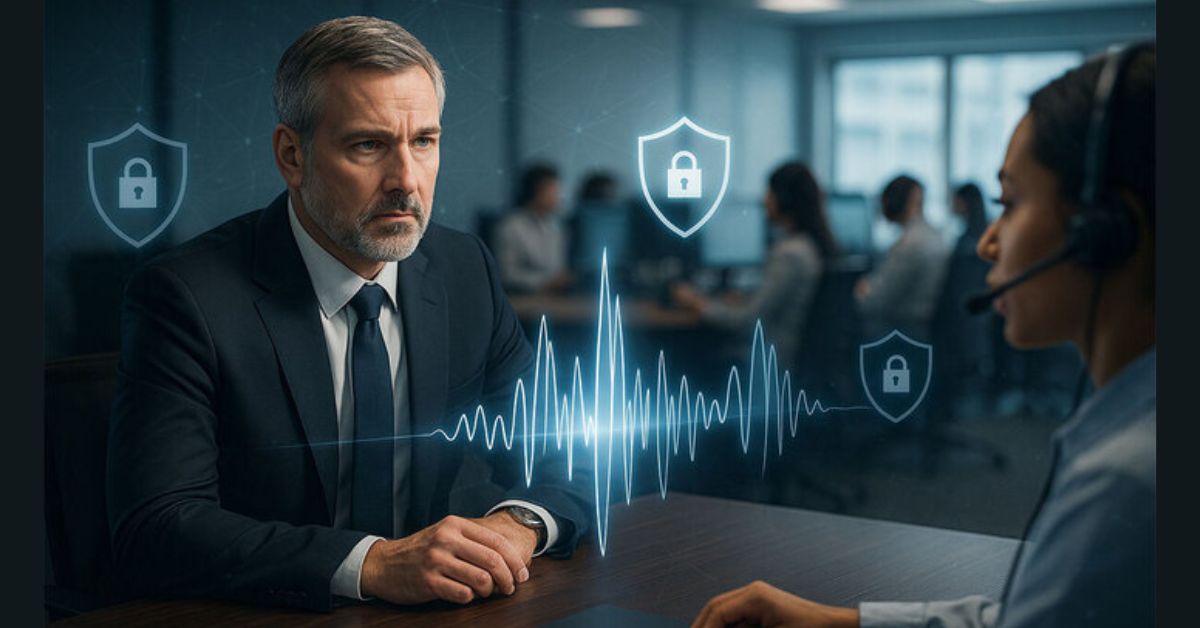The Role of Human Factors in Cyber Security: Addressing the Weakest Link
September 12, 2023, 8 min read
Human factors in cyber security are the most vulnerable part of any ICT infrastructure, posing the most significant dangers and threats to a business or organization in case of a successful data or security breach.
Spreading these ideas and bringing attention to common mistakes and excellent practices can help keep homes and companies more secure regularly regarding cyber security.
Understanding Human Factors in Cyber Security Incidents
IBM found that human mistakes account for 95% of all cybersecurity incidents. Even though everyone makes mistakes, human error is the overwhelming cause of cyber breaches (19 out of 20). Another report found that in 2020, the company lost $3.33 million due to human error. Information security incidents can be the consequence of either deliberate actions or inactions on the part of humans. Things like using an easily cracked password, not upgrading software, and downloading malicious programs are all examples of poor security practices.
Skill-based and decision-based errors are the two main categories of human error in cyber security. Mistakes that arise from a lack of skill are typically little and happen when performing routine tasks. Negligence owing to inattentiveness, fatigue, or distraction is a common cause. In contrast, user-generated errors occur when the user makes a poor choice. Mistakes in judgment arise when there is a gap between what an individual knows, what they can do, and what they know about a particular situation. Inaction in a particular situation is also included.
The Psychology of Human Factors in Cyber Security: Behavioral Biases and Decision-Making
Hyperbolic discounting describes our propensity to prioritize immediate gratification over future gratification, even if the future gratification is of equal or more excellent value.
Every single person on the planet is capable of making snap decisions. By learning about these biases, we can improve our security measures and prevent making any mistakes.
We’ll examine some cognitive biases that can undermine your cyber security judgments.
1. Availability Bias
Because of availability bias, we tend to give more weight to the most recent data when making decisions. If a new ransomware assault is reported, for instance, most security teams would prioritize safeguarding their networks against it, regardless of whether or not it is relevant to their field.
In the wake of such headlines for human factors in cyber security, businesses may fail to address critical issues that pose a more significant threat to their networks. While it’s essential to take precautions against recently famous assaults, it’s also crucial to think about other possibilities.
2. Confirmation Bias
The tendency to look for evidence that supports one’s preconceived notions is known as confirmation bias. This bias becomes apparent when searching for potential dangers. Because of this bias, analysts may mistakenly seek data confirming their preconceived notions and expertise. Some seasoned security analysts jump to conclusions about the root of an issue and then only hunt for information that confirms their hypotheses.
Suppose an analyst suspects an insider is responsible for a breach. In that case, they may fail to consider the possibility that a related-party interaction (involving third-party vendors and resellers, government authorities, or internal auditors) set the events that ultimately led to the breach in motion.
Professionals in the security industry should be more receptive to feedback and willing to consider alternative viewpoints. This will allow them to examine concerns that they may have overlooked before.
3. The Optimism Bias
Optimism bias, often called the “illusion of invulnerability,” is the tendency to overestimate one’s likelihood of a favorable outcome while underestimating the likelihood of an unfavorable one.
Your network could still be breached even if you use an SIEM platform and put up all the necessary correlation rules and alerts. Intruders might quickly obtain access to your network using a phishing assault.
Although this bias benefits everyday life, it should be the polar opposite when setting up servers, applications, firewalls, and other cyber security measures. We advise you to take preventative action by implementing advanced threat intelligence and UEBA capabilities.
4. Aggregate Bias
Aggregate bias occurs when an inference is made about an individual based on information collected from a larger group.
Imagine your company has suffered a data breach. Whose records would you look into first, if any? Those who have a lot of power, for sure. Because of this bias, analysts may pay more attention to a few users, such as administrators or privileged users, than they should. But in truth, any ordinary worker could have started the chain of events that led to the breach.
Individual human behavior can be analyzed for anomalies by looking for deviations from the norm in routine actions. Defenses against insider attacks can be bolstered using UEBA to identify malicious behavior. Discover more about the UEBA.
5. The Framing Effect
People are influenced by framing bias to make decisions without fully considering all available information. Cybercriminals can exploit this when sending phishing emails disguised as official company communications or software updates.
This prejudice is also visible in the market for security software and hardware. As a result of a recent occurrence (and possibly availability bias), analysts may decide to invest in pricey solutions that address low-probability hazards like ransomware.
We advise that decision-makers adopt a more analytical mindset while choosing a security tool. Many different tools exist to solve various types of security issues. To further protect your business, you should look into an SIEM product that can do everything.
The Role of Management in Addressing Human Factors in Cyber Security
There is a lack of cyber security experts at the top levels of most companies. This omission creates a chasm between cyber security leaders and employees, undermining safe cyber activities and making establishing and executing cyber security regulations more challenging.
Leaders must have the social capital and competencies to manage non-technical staff to raise cyber security awareness effectively. A leader’s technical knowledge is useless if they lack the people skills to effectively communicate with their team and take ownership of ensuring that everyone is following best practices regarding cyber security.
Information technology managers and chief information security officers (CISOs) are typically ill-equipped to convey and delegate cyber security awareness policies to employees due to a lack of leadership experience and competencies. This is significant because hacks persist if top executives cannot convey their organization’s cyber security requirements and procedures.
Balancing Convenience and Security in User Experience
Traditional wisdom holds that improving one facet of the digital experience (user experience or security) will compromise the other.
Consider the use of passwords. If you’re user experience (UX)-obsessed, you might let people pick simple, easy-to-remember passwords with few characters and no frequency requirements. One could claim that this method results in a more positive user experience. However, there is a significant (and unneeded) security risk when operating in this manner.
Conversely, you may need to use extremely lengthy and complicated passwords if you are highly security-conscious. One potential negative is that customers may give up on a purchase because they can’t remember their password or are too frustrated by the procedure.
There must be no competition between an excellent UX and solid security for your business if you want to strike a good balance. Having a secure identity will aid in striking this equilibrium.
The Importance of Cultural Change in Cybersecurity
The study of human behavior includes everything from political structure to religious belief to the learning process and beyond. Learning about cultural change can broaden a person’s worldview and improve their insight into human relationships. Additionally, it provides additional insight into one’s daily operations by revealing how one’s social surroundings affect one’s actions, emotions, and thoughts. Thus, the field helps people develop as individuals and makes them more productive and successful in their chosen professions.
Knowing the whys and hows of cybercrime from a sociological perspective is a tremendous asset in cyber security. Studying sociology also equips cybersecurity experts with the tools they need to make well-informed decisions.
Tools and Technologies to Support Human Factors Cybersecurity
Despite the limited overlap between the people and organizations in these fields, many civil society groups and certain governments have been lobbying for a human-centric approach to international cyber security.
This strategy has been gradually but steadily developed throughout the past decade. The human rights community recognized the necessity of secure networks due to defenders’ increased reliance on digital tech. This was prompted by rising malicious activities from state and non-state actors, including cybercriminals, hackers-for-hire, and surveillance tech vendors. They undermine rights through tactics like internet shutdowns, malware, data theft, and restrictive cyber laws.
Conclusion
Human error or carelessness are the root causes of most cyber security incidents. These issues stem mainly from carelessness or improper security measures being in place.
It’s not simple to fix problems caused by humans. A malfunctioning workforce cannot be replaced in the same way that a buggy app can be. When people make mistakes, there’s usually a good explanation. It is paramount to find out what went wrong and how to prevent it from happening again.
This may be more than many local business owners are comfortable taking on. However, the benefits justify the effort. A small company’s survival may depend on its data, so it is essential to know how to protect it and reduce the human factors in cyber security.
Think of your staff as integral to your company’s cyber security strategy. Humans will exercise discretion when clicking on content after receiving adequate education, awareness, and reminders. Training programs educate people on the importance of good cyber security practices and equip them to make informed decisions that lower cyber risk in the workplace.
Also, check out our blog on cybersecurity training here.
Frequently Asked Questions (FAQs) About Human Factors in Cyber Security
1. How can organizations effectively measure the impact of cultural change on cybersecurity within their workforce?
Organizations can measure the impact of cultural change on cybersecurity through various methods, including surveys, focus groups, and data analysis. Surveys can gauge employees’ awareness, attitudes, and behaviors towards cybersecurity practices. Focus groups provide a platform for open discussions, allowing organizations to identify specific challenges and opportunities for improvement. Data analysis involves examining metrics such as incident rates, compliance levels, and training completion rates to assess the effectiveness of cultural change initiatives.
2. Are specific training programs or resources available to help employees recognize and mitigate cognitive biases that could compromise cybersecurity?
Yes, training programs and resources are available to help employees recognize and mitigate cognitive biases in cybersecurity. These programs often incorporate elements of psychology and behavioral economics to educate employees about common biases and their impact on decision-making. Training modules may include case studies, simulations, and interactive exercises to illustrate how biases can lead to security vulnerabilities. Additionally, organizations can provide access to online resources, articles, and workshops to further support employees in understanding and addressing cognitive biases.
3. What strategies can organizations implement to bridge the gap between technical cybersecurity experts and non-technical leadership, ensuring effective communication and enforcement of cybersecurity policies?
Organizations can implement several strategies to bridge the gap between technical cybersecurity experts and non-technical leadership. One approach is to provide comprehensive training and education programs tailored to the needs of non-technical leaders, helping them understand cybersecurity risks, terminology, and best practices. Additionally, establishing clear communication channels and regular meetings between technical and non-technical teams fosters collaboration and alignment on cybersecurity priorities. Moreover, integrating cybersecurity considerations into organizational decision-making processes and performance metrics reinforces the importance of cybersecurity across all levels of the organization.
4. Are there any emerging technologies or innovations in cybersecurity that specifically target human factors and behavioral biases to enhance overall security posture?
Yes, emerging technologies and innovations in cybersecurity focus on addressing human factors and behavioral biases to enhance overall security posture. For example, advanced analytics and machine learning algorithms can analyze user behavior patterns to identify anomalies and potential security threats. User behavior analytics (UBA) and endpoint detection and response (EDR) solutions leverage these technologies to detect and respond to suspicious activities in real time. Additionally, gamification techniques and interactive training platforms engage employees in cybersecurity awareness programs, making learning more accessible and impactful.




























